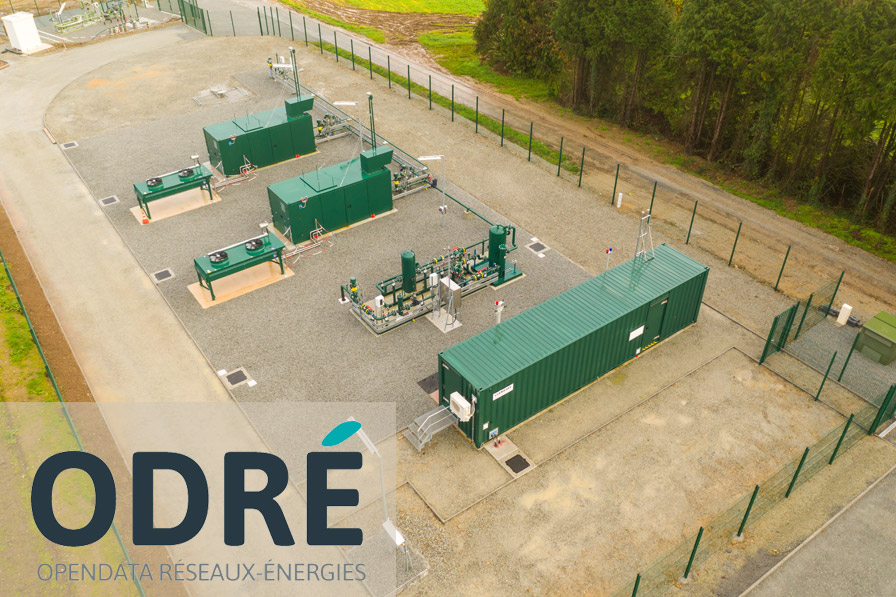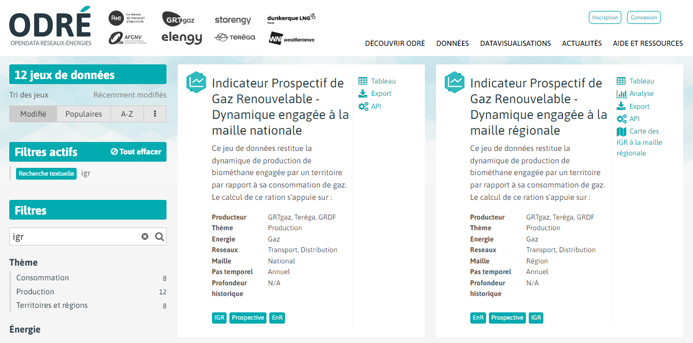Open data: 1st Renewable Gas indicator

The indicator, available on ODRE website, gives statistics for renewable gas production compared to gas consumption for the entire gas distribution and transmission network.
GRTgaz and GRDF have come up with a joint method to set up this indicator in all the territories. Bettina Hortal, Manager of the GRTgaz Territorial Delegations Division states: "Local authorities want very much to grasp the role that renewable gas plays in their territory. Only a close collaboration between the distributor and the transporter gives them access to open data that is trustworthy and available. Adapting our renewable gas networks also means clarifying the territorial procedures and coming up with new ways of sharing data. This project is a good example of how to do this."

Open Data Energy Networks (ODRE) platform and Renewable Gas indicators.
The Renewable Gas indicator has two timeframes
- a yearly indicator: this corresponds to the ratio between local production of renewable gas over the past three months, annualised and compared to gas consumption for the previous year. It allows users to see the growth of natural gas in the territories.
- a monthly indicator: this is the ratio between renewable gas production and gas consumption over the month. Users can see seasonal effects and understand the role that network interconnection plays in the territories.
- A forward-looking indicator : This is the ratio between the annual production of biomethane (current and future) recorded in the capacity register managed by GRTgaz and the annual gas consumption over 5 years according to the Perspectives Gaz scenarios.
This indicator is proposed for use at national, regional and departmental levels, and for grouped municipalities (when confidentiality constraints permit).